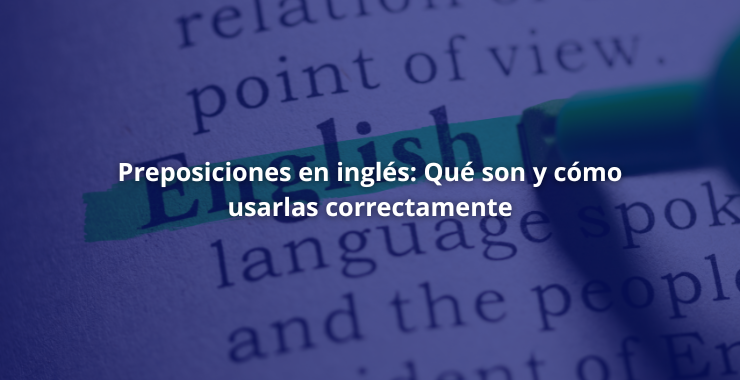La gramática suele ser uno de los grandes quebraderos de cabeza de cualquier estudiante de inglés. ¿Verdad? Hoy te damos las claves para que hagas un uso correcto del Gerundio y el Infinitivo.
Los tiempos verbales son una de las primeras lecciones que aprendemos cuando estamos en el instituto o asistimos a una academia de inglés, y a medida que vamos subiendo de nivel la cosa se complica. Sobre todo cuando llegamos al Gerundio e Infinitivo en inglés, pues no hay ninguna regla que nos indique en qué caso va cada cual.
¡Los ingleses somos así! Pero para no torturarte mucho con esto, hoy te traemos una entrada especial para que te quede claro este tema. ¿Preparado?
Tiempos verbales Infinitivo y Gerundio en Inglés
Cuando usamos dos verbos juntos en inglés que impliquen Gerundio e Infinitivo podemos proceder de dos formas:
Infinitivo: To + verbo – I want to be rich
Gerundio: Verbo + ing – They enjoy spending time with us
Como hemos dicho ya, no existe una regla concreta para saber cuándo usar cada uno. Por eso hemos preparado dos listas que contemplan los verbos más usados. Así podrás ver qué verbo va en qué forma.
Veamos las diferencias:
1. Verbos seguidos de infinitivo (to+verbo)
Los principales verbos que van seguidos por la forma de infinitivo son:
| VERBO | SIGNIFICADO | EJEMPLO |
|---|---|---|
| WANT | querer | I want to be rich. |
| DECIDE | decidir | We decided to travel tomorrow. |
| PROMISE | prometer | He promised to finish his homework. |
| PLAN | planear | They plan to sell the house soon. |
| FORGET | olvidar | Please, don’t forget to take your umbrella. |
| HOPE | esperar, tener esperanza | I know you were hoping to see her again. |
| OFFER | ofrecer | The girls offered to help me with the cake. |
| AGREE | estar de acuerdo | Last night, we agreed to go to the supermarket together. |
| LEARN | aprender | The kids will learn to make their beds. |
| NEED | necesitar | That family needs to spend more time together. |
| HAVE | tener | You have to go to school. |
| ASK | pedir, preguntar | The officer asked them to stay calm. |
| ARRANGE | organizar | The mothers arranged to have a play date for their kids. |
| REFUSE | rechazar | The workers refuse to stay after-hours. |
| DEMAND | exigir | The group demands to talk to the manager. |
Si necesitas formular la versión negativa para el segundo verbo, tan solo tienes que añadir ¨not¨ delante del ¨to¨. Por ejemplo: We decided not to go out tonight. (Decidimos no salir esta noche).
2. Verbos seguidos de (verbo + ing)
Ahora vamos a hablar de aquellos verbos que cuando van seguidos de otro verbo, este último requiere la terminación -ing.
| VERBO | SIGNIFICADO | EJEMPLO |
|---|---|---|
| ENJOY | disfrutar | They enjoy spending time out. |
| MIND | tener inconveniente | Last year, she didn’t mind staying home for her birthday. |
| IMAGINE | imaginar | Can you imagine having to work on Sundays? |
| AVOID | evitar | She avoided travelling during pregnancy. |
| FINISH | terminar | When I finish cleaning, I’ll call it a day. |
| LOOK FORWARD TO | esperar con ansia | We look forward to hearing from you. |
| MISS | perder, echar de menos | They miss staying up all night. |
| RISK | arriesgar | He would never risk losing his job. |
| SUGGEST/RECOMMEND | sugerir/recomendar | The advisor suggested studying one hour a day. |
| KEEP | mantener | You have to keep trying. |
La forma negativa es parecida al caso anterior del infinitivo. Para estos verbos hay que escribir not antes del verbo que termina con -ing. Por ejemplo: We miss not having to wake up early. (Echamos de menos tener a nuestros amigos cerca).
3. Verbos que aceptan ambas variaciones: to e –ing
Existen dos grupos de verbos que pueden ser seguidos tanto por verbos en infinitivo o verbos con la terminación -ing.
3.1. Verbos que no cambian de significado
El primer grupo de verbos es aquel que no cambia (mucho) de significado al usar el infinitivo o la terminación -ing. La diferencia es muy sutil y afecta básicamente a la intención del sujeto para verbos que hablan de gustos. Mientras que la forma -ing resalta la preferencia del sujeto en sí misma (de manera general), con la forma del infinitivo se habla más del resultado o el hábito concreto (más específico). Vamos a verlo con algunos ejemplos:
| VERBO | SIGNIFICADO | EJEMPLO CON ING | EJEMPLO CON TO |
|---|---|---|---|
| LOVE | amar | He loves travelling. | I love to go for a walk in the morning. |
| LIKE | gustar | We like dancing. | My neighbor likes to stay home after dinner. |
| HATE | odiar | She hates ironing. | My friend hated to have to drive that night, it was dark. |
| PREFER | preferir | Our family prefers going out for dinner. | The students prefer to read books about adventures rather than classics. |
| START | comenzar | The group started singing in the middle of the street. | The group started to sing in the middle of the street. |
| BEGIN | iniciar | He finally began writing a proposal. | He finally began to write a proposal. |
3.2. Verbos que sí cambian de significado
El segundo es el grupo de verbos que aceptan las dos formas pero que cambian de significado. ¡Veámoslo!
| VERBO | SIGNIFICADO | EJEMPLO COM ING | EJEMPLO COM TO |
|---|---|---|---|
| REMEMBER | acordarse | I don’t remember closing the windows. (remember + ing = Recordar posteriormente si algo se hizo o no | You have to remember to close the windows. (remember + to = Recordar y luego hacer) |
| STOP | parar | She needs to stop biting her nails. (stop + ing = parar, no hacer más) | We were tired, so we stopped to rest. (stop + to = parar de hacer algo para empezar a hacer otra cosa, interrumpir un proceso) |
| MEAN | significar, tener intención de | Being a mother means having more patience. (mean + ing = resultado de una acción) | Sorry, we didn’t mean to upset you. (mean + to= tener intención de) |
| TRY | intentar, experimentar | We can try working together to solve this. (try + ing = experimentar, intentar algo para ver si es correcto o funciona) | He will try to fix the TV for you. (try + to = intentar, hacer um esfuerzo para conseguir un objetivo) |
| GO ON | continuar, seguir | She went on talking . (go on + ing = continuar una acción, en general, por más tiempo del que gustaría) | He went to Paris and, then, went on to see London. (go on + to = empezar con la próxima acción, continuar) |
Excepciones
Como en todo, tenemos una serie de excepciones:
- Verbos de preferencia, would y should. Deben ser seguidos únicamente del infinitivo. We would like to have more time (Nos gustaría tener más tiempo), They would love to come back (Les encantaría volver).
- Deslike. Solo se puede usar seguido de verbo con terminación –ing. We all disliked listening to him (A ninguno de nosotros nos gustaba escucharle).
- Existen verbos que pueden ir seguidos por otros verbos sin usar to+infinitivo o -ing. Ejemplos: Let me see that for you. You can’t make her go to that party. Please, help me find the way to get there.
Sin duda la clave de todo esto es practicar. Si practicas no te hará falta aprender las listas de memoria, ¡te saldrá solo!
¿Tienes alguna duda? Déjanos un comentario y te la resolvemos.

También puede interesarte:











